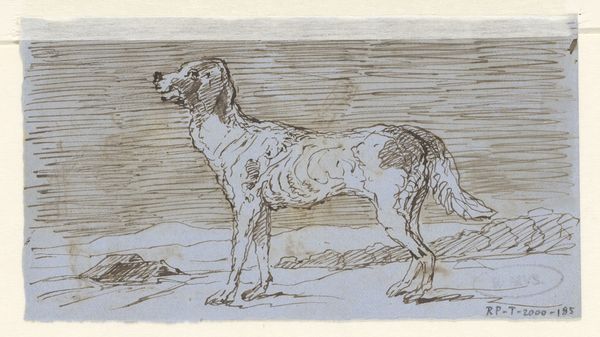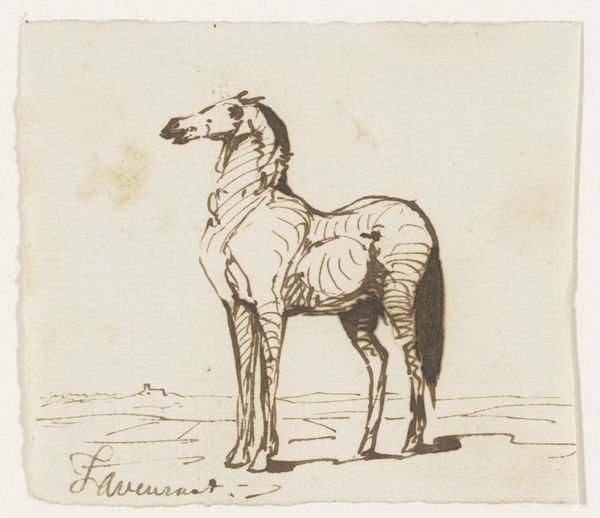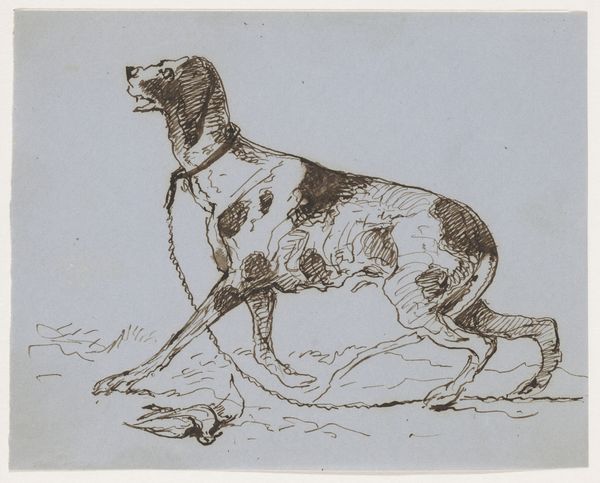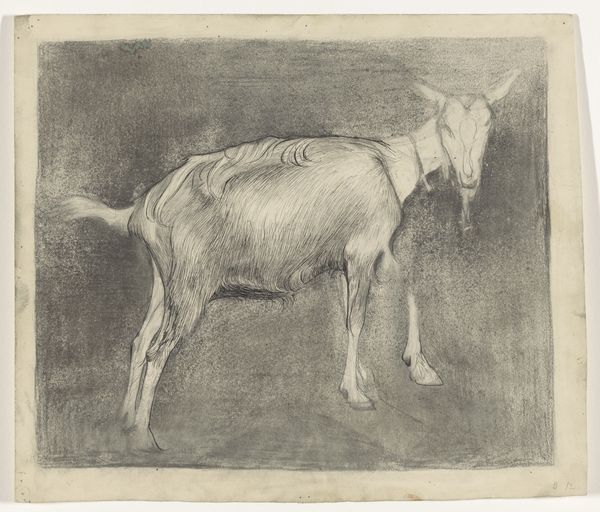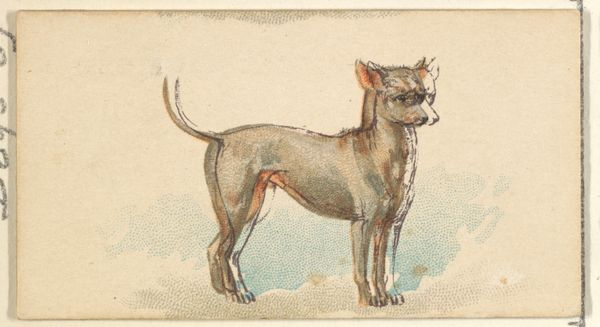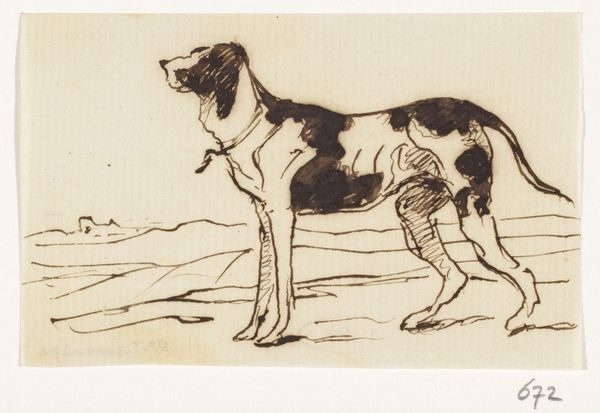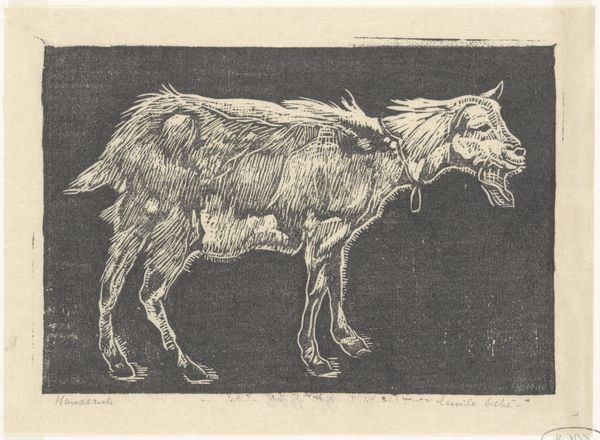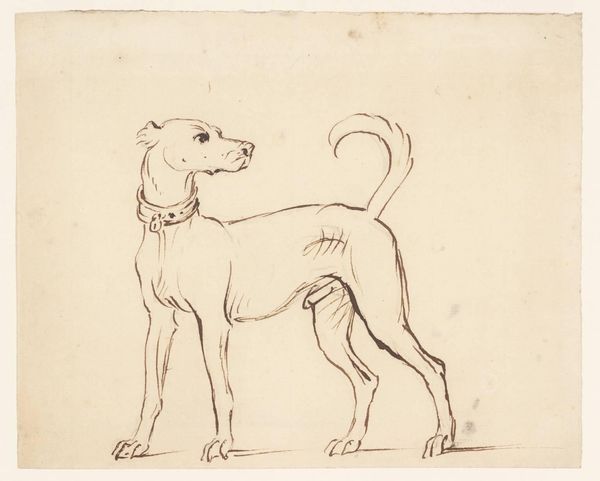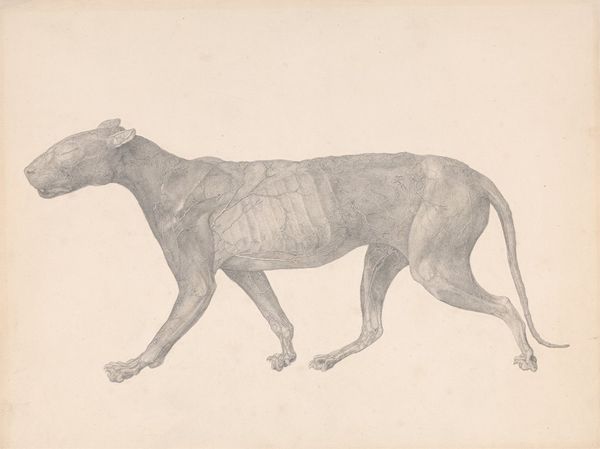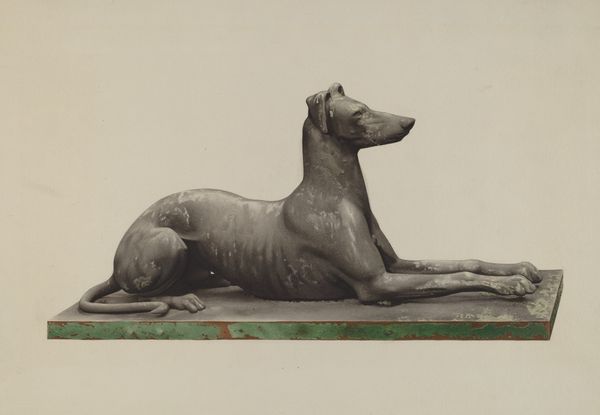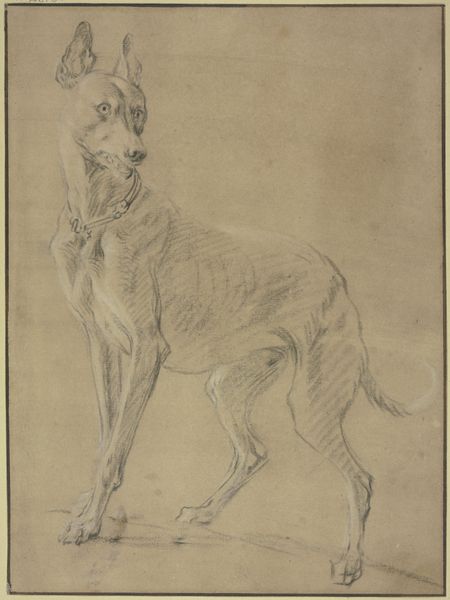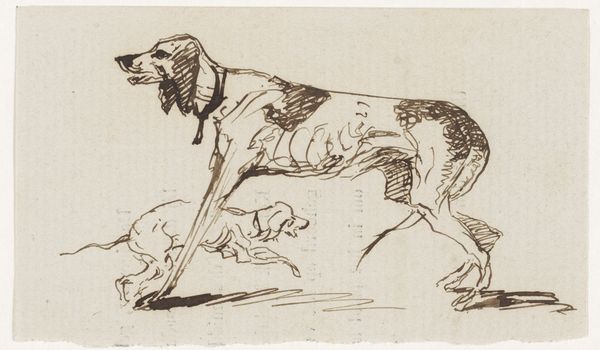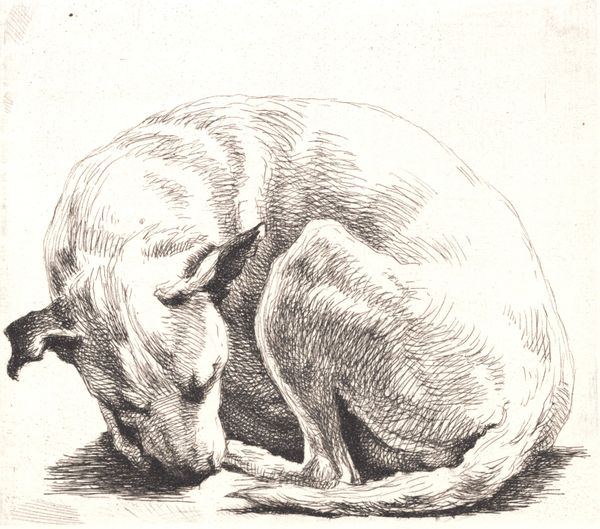
drawing, print
#
drawing
# print
#
caricature
#
caricature
#
figuration
#
line
Dimensions: Sheet: 3 7/16 × 5 1/2 in. (8.8 × 14 cm)
Copyright: Public Domain
Editor: Right now, we’re looking at “Greyhound,” a print made in 1912 by Moriz Jung, on view at the Metropolitan Museum of Art. I’m immediately struck by its graphic quality; the stark lines against that bold blue. It feels very…of its time. What jumps out at you when you see it? Curator: What interests me is the intersection of the animal form and the rise of caricature. Think about it - popular imagery at the turn of the century, how was it being disseminated? Prints like these were crucial in shaping public perceptions. And consider the choice of a greyhound - what connotations did that breed carry? Editor: So, more than just a picture of a dog, it's a statement? The lines feel almost exaggerated, not quite realistic. Curator: Precisely! Think about the function of caricature: to amplify certain traits. What message could Jung be sending? This was a period of immense social change, with class anxieties and new technologies transforming daily life. Could this elegant, somewhat aloof creature represent a commentary on the perceived detachment of certain segments of society? How would a 1912 viewer "read" this? Editor: That’s fascinating. I never thought about a dog print having so much social weight. It changes how I see all sorts of art from this period now, not just this picture. Curator: And isn’t that the power of understanding the context? It pushes us beyond mere aesthetics into the realm of social commentary. Editor: Definitely gives me a lot to consider. It's not just a drawing, it's a mirror reflecting societal values, class and status. Thank you!
Comments
No comments
Be the first to comment and join the conversation on the ultimate creative platform.
